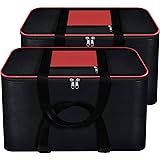Securing your WordPress website template is crucial, especially if it’s used for an e-commerce site. With cyber threats constantly evolving, implementing robust security measures can safeguard your site, your customers’ data, and your business’s reputation. Here are best practices to secure a WordPress website template and protect your site from potential security risks.
1. Choose a Secure Template
Selecting a reputable, secure WordPress template is the first step. Not all templates are created equally; some are coded poorly or lack necessary security protocols. For the best WordPress theme for e-commerce website, choose a template from trusted providers that prioritize security, compatibility, and regular updates. Look for templates that:
- Are updated frequently.
- Are compatible with the latest WordPress versions.
- Follow WordPress coding standards.
- Include support from developers.
These traits can help avoid vulnerabilities that cybercriminals often exploit.
2. Keep WordPress and Plugins Updated
Updates to WordPress core, plugins, and themes are essential for security. Developers regularly release updates to fix security vulnerabilities and bugs that hackers could exploit. To keep your WordPress website template secure:
- Enable automatic updates or regularly check for new versions.
- Use a plugin to manage and notify you about updates if you have multiple plugins installed.
- Back up your site before major updates to avoid data loss in case of any incompatibility issues.
For e-commerce sites, where customer data security is a priority, these updates are particularly critical.
3. Install a Security Plugin
Security plugins add an extra layer of protection to your website by monitoring for suspicious activities and blocking malicious attempts. There are several reliable plugins that can help secure your WordPress website template:
- Firewall Protection: Security plugins provide firewall protection, filtering traffic, and blocking malicious bots before they reach your site.
- Malware Scanning: Regular scans detect any potential malware or vulnerabilities in your website files.
- Login Security: Many security plugins offer additional login protections like two-factor authentication, limiting login attempts, and more.
Some popular security plugins for WordPress include Wordfence, Sucuri Security, and iThemes Security. These tools are excellent for protecting both small and large websites, including e-commerce sites that handle sensitive transactions.
4. Use Strong Login Credentials and Limit Login Attempts
A common vulnerability on WordPress sites is weak login credentials. Securing your login credentials can prevent unauthorized access:
- Use Strong Passwords: Avoid using simple, common passwords. Instead, use a combination of letters, numbers, and symbols. Consider a password manager for secure storage.
- Change the Default Username: The default username “admin” is an easy target. Instead, create a unique username to add an extra layer of security.
- Limit Login Attempts: Restrict the number of login attempts to prevent brute force attacks, where hackers use automated methods to guess your password. Use a plugin like Login Lockdown to control failed attempts.
5. Implement Two-Factor Authentication (2FA)
Two-factor authentication (2FA) adds an extra step to the login process, requiring users to verify their identity through a secondary method. It’s a critical feature for sites with sensitive customer data or payment details, making it especially beneficial for e-commerce websites. With 2FA:
- You or your users will receive a one-time code sent to a mobile device or email, providing an extra layer of verification.
- It drastically reduces the likelihood of unauthorized access, even if a hacker knows your password.
You can enable 2FA through plugins like Google Authenticator or Duo Security.
6. Secure Your Website with HTTPS
Hypertext Transfer Protocol Secure (HTTPS) is essential for e-commerce sites and recommended for all WordPress websites. HTTPS ensures secure data transfer between your website and users, encrypting sensitive information like passwords, payment details, and personal information.
- SSL Certificate: Obtain an SSL certificate to enable HTTPS. Many hosting providers offer free SSL certificates.
- Better SEO and Trust: HTTPS not only enhances security but also boosts your SEO, as search engines prefer secure sites. It also builds trust with visitors, reassuring them that your site is safe.
Conclusion
Securing a WordPress website template involves implementing multiple layers of protection, from choosing the best WordPress theme for e-commerce websites to enforcing strong login credentials and regular monitoring. By following these best practices, you can build a solid defense for your website, safeguarding your business, customers, and data from potential threats. Taking proactive steps today will save you time, resources, and peace of mind in the long run.
Vasukie 2-in-1 Olive Oil Sprayer and Dispenser Bottle for Kitchen | 500ml Glass Oil Bottle with Premium Nozzle | Cooking Oil Sprayer for Healthy Cooking and Salad Making (Spray Bottle)
₹198.00 (as of 14 April, 2025 16:53 GMT +05:30 - More info)Chandan Wood Wooden Piggy Bank for Kids & Adults, Coin Box with Carved Design, Savings Box, Mini Bank, Donation Box, Smart Money Box, Wooden Coin Box, Money Saver, Piggy Bank with Numbers (1)
₹499.00 (as of 14 April, 2025 16:53 GMT +05:30 - More info)Cookwell Bullet Mixer Grinder (5 Jars, 3 Blades, Silver) - Copper, 600 Watts - 2 Year Warranty
₹2,199.00 (as of 14 April, 2025 16:59 GMT +05:30 - More info)REFULGIX 2L Motivational Sipper Water Bottle with Straw & Time Marker | BPA-Free Leakproof Sports Bottle for Gym, Fitness, Office, School, Home & Outdoor Hydration (Black)
₹299.00 (as of 14 April, 2025 16:53 GMT +05:30 - More info)Storite 2 Pack Moisture Proof Nylon Large Size Underbed Storage Bag For Clothes (54 x 46 x 28 cm) - Black, Rectangular
₹499.00 (as of 14 April, 2025 16:59 GMT +05:30 - More info)Discover more from The General Post
Subscribe to get the latest posts sent to your email.





